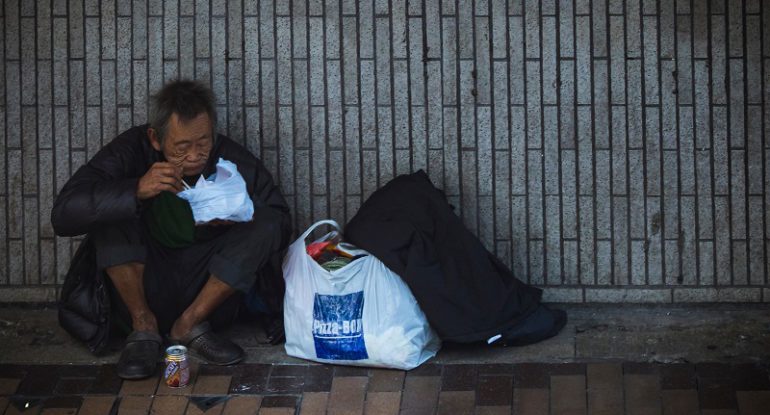Using blockchain to optimize food supplies & consumption

There couldn’t be a more uncomfortable reality than this – rapid technological advancements and hunger coexist among us. Every day, we read about how digital transformation elevates underprivileged people, such as in the Middle East. There’s an extensive bank of use cases hailing the arrival of ‘digital,’ and we could be marching closer to the ‘perfect world.’ And yet, the World Food Program finds that nearly 820 million people go to bed on empty stomachs. 820 million! How scary is that?
What’s scarier is the finding from the UN that suggests there’s no shortage of food. The world’s vast lands are producing enough of it. But, the opaque (and corrupt) food supply chain is not bridging the gaps to the extent it could. As per the UN, 14% of all food is lost between the harvest and the stores.
So one part of the world produces more than the required food supplies, while another, a billion people are left to starve. In between, we have an inefficient supply chain that has to undergo total revamping. While we are at it, blockchain is a solution that not only digitizes the food supply chain but also enables 100% automation and transparency of all the stakeholders involved. The distributed ledger allows the peer-to-peer exchange of data & value based on the rules governed by smart contracts.
The beauty of a DLT lies in its power to store immutable records, and Owen Miller, the founder of the Non-Human Party, wants to put it to greater use. There’s IBM’s Hyperledger blockchain, built around resolving food loss and fraud issues, among essential services. There’s also Consensys, whose supply chain solution over Ethereum blockchain enables the provenance of consumer goods, including food supplies. Now, all these solutions focus on the farm-to-store supply chain. That’s great but not the optimal implementation of blockchain.
“Every human body is different from another and the impact of different food items and even different farms could be different on different bodies. That’s what we are trying to understand”.
Also, read – What Is The Best Way to Learn Blockchain IoT Skills For GenZ?
From Farms to Mind & Strength: Total Transparency of Food Data
Blockchains and smart contracts could automate the entire life cycle of food from farms to the belly. Since the operational logic of a Dapp is written in an immutable agreement, it brings transparency. Everyone on the network has access to the proceedings, while no one has the authority to make changes in the ledger unless the entire governing community agrees to it. Besides making the whole process efficient, food supply over blockchain assures the following:
- Food Freshness: Ensure freshness by continuously evaluating the shelf life.
- Food Fraud: Immutable data ledger makes all changes transparent.
- Sustainability: Helps in ensuring the expected quality for a more extended period.
- Avoid Wastage: Identify hotspots of food wastage.
Now, food & agriculture are a complex industrial landscape, including multiple stakeholders. Supply Chain & logistics, farmer procurement contractors, builders, finance, etc., are all tied together to drive one of the world’s largest sectors. As we all know, it is difficult to avoid falling prey to opaque processing, fraud, unforeseen costing, and climate damage beyond all bounds. When such an ecosystem is deployed over a decentralized network (such as a blockchain), most of these issues are resolved significantly.
Use Cases
Miller, who is preparing to contest the upcoming state election in New South Wales (Australia) in 2023, believes that the prevalence of unfit societies can be blamed on the opacity of the food supply chain.
He believes that blockchain could be put to greater use for tracing the journey of food supplies from the farm-to-retail shelf. With data health metric insights captured by ubiquitous wearable sensors, the impact of a specific farm produce on a particular human body would provide insightful, personalized nutrition plans.
The party is working towards building a community of fitter, smarter, and generally healthier citizens than others through the idea of nationality as a service.
Other impressive use cases in this direction
Cardano’s intelligent contracting insurance solution protects farmers from damage losses due to extreme weather conditions. In extreme climatic conditions such as a drought or floods, the insurance module over the smart contract automatically releases payments to the farmers when the readings breach a certain level. So the smart contract deployed over a blockchain has predefined conditions about the amount to be released to the farmers in different scenarios.
World Food Programme (WFP) used blockchain in Azraq Camp (Jordan) to help 10,000 refugees pay for their food. The blockchain platform records all assets & entitlements of the refugees.
Working Towards a Fitter & Smarter Society
As discussed, hunger is just one significant aftermath of inefficient food supplies. But other concerns deserve our attention. We must build futuristic solutions that are more than just connected digital platforms. While there are many technologies, blockchain is what ties them together. It’s time to actualize its true potential.




























































